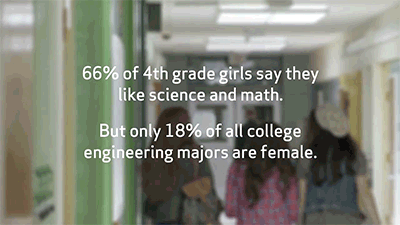Text
“You are worth finding. Worth knowing. Worth loving. You and all your one million layers. Always hold that close.”
— Danielle Doby
1K notes
·
View notes
Quote
It all begins and ends in your mind. What you give power to has power over you.
Leon Brown (via onlinecounsellingcollege)
6K notes
·
View notes
Photo

On this day but in 1750, Caroline Lucretia Herschel was born.
Caroline Herschel was the sister of the astronomer William Herschel. After learning astronomy alone and math with the help of her brother, she became his assistant. His most significant contribution to astronomy were the discoveries of various comets, especially comet 35P / Herschel-Rigollet.
She was the first woman to be awarded a Gold Medal of the Royal Astronomical Society (1828), and to be named an Honorary Member of the Royal Astronomical Society (1835, with Mary Somerville). She was also named an honorary member of the Royal Irish Academy (1838). The King of Prussia presented her with a Gold Medal for Science on the occasion of her 96th birthday (1846).
Read more at: Wikipedia
Image: carcanyon
6K notes
·
View notes
Quote
Lasst uns daran erinnern: Ein Buch, ein Stift, ein Kind und ein Lehrer können die Welt verändern.
Malala Yousafzai
(via jedentageinzitat)
109 notes
·
View notes
Text
Some of the Great Women Scientists
Marie Curie

Pioneering work in radioactivity and nuclear physics and chemistry. Developed techniques to isolate radioactive isotopes and discovered two elements, polonium and radium. Two Nobel Prizes, one in physics, and another in chemistry.
Rosalind Franklin

Research in the field of X-ray crystallography in physical chemistry. Used x-ray crystallography to find the structures of DNA, RNA, coal, graphite, and viruses.
Lise Meitner

Research on radioactivity and nuclear physics. Discovered and studied nuclear fission of Uranium when an additional neutron is added. Won the Max Planck Medal and many other awards.
Emmy Noether

Mathematician who made significant contributions to abstract algebra and theoretical physics. Particularly known for her work on rings, fields, and algebraic invariants in algebra. In physics, developed what is now known as Noether’s Theorem relating symmetry to conservation laws.
Barbara McClintock

Significant work on cytogentics, particularly that of maize or corn. Cytogenetics deals with the relation between chromosomes and cell behavior. Discovered transposition to explain how genes control physical characteristics. Won the Nobel Prize in Physiology or Medicine.
Rachel Carson

Marine biologist and conservationist. Her books and writings like Silent Spring helped advance the global environmental movement.
Grace Hopper

Computer scientist, Navy rear admiral, and one of the first to program the Harvard Mark I computer which was a computer used during World War II. Major contributions important to modern programming such as compiler technology and the idea of machine-independent programming languages.
Katherine Johnson

NASA mathematician who made crucial calculations in orbital mechanics for the first United States manned spaceflights. Helped pioneer the use of computers to help preform these calculations. Awarded the Presidential Medal of Freedom.
Jocelyn Bell Burnell

Astrophysicist who, in her postgraduate work, discovered the first radio pulsars. Won the Special Breakthrough Prize in Fundamental Physics in 2018. Former president of the Royal Astronomical Society(2002-2004) and the Institute of Physics (2008-2010).
Jane Goodall

Goodall is a primatologist and anthropologist. She held a 55 year long study in Gombe Stream National Park, Tanzania on chimpanzees and their social interactions.
…and many more!
In honor of International Women’s Day.
821 notes
·
View notes
Photo







Industrious, adventurous, determined, & brilliant, the women of Engineering World Health do their part to Make It Happen.
Happy International Women’s Day!
12 notes
·
View notes
Link
We’re two decades past the publication of the now-retracted study that claimed to show a link between autism and the MMR vaccine, but we can’t seem to shake its effects. The physician who lead the study committed fraud and has had his medical license revoked. Numerous studies have demonstrated the complete lack of a link between vaccines and autism. Yet many people are still concerned.
Now, in the face of some of the worst outbreaks the world has seen in recent years, Danish researchers have published one of the largest studies of autism and MMR to date. Its finding should come as no surprise: there’s no link.
The results, published in the Annals of Internal Medicine, are the result of following 657,461 children born between 1999 and 2010. Researchers followed up with those children starting at one year of age and continued through August 31, 2013. The massive size of the dataset allowed the study authors to control for various factors like age, sex, sibling history of autism, and other autism risk factors. In the end, 6,517 children received an autism diagnosis—and the risk was exactly the same regardless of whether they got the MMR vaccine. What’s more, as an editorial in the same journal issue points out, they showed that there was no association between when a child got vaccinated and when they got an autism diagnosis, further undermining any causal link.
Continue Reading.
2K notes
·
View notes
Link
In a remarkable landmark breakthrough, scientists have demonstrated a computer system effectively translating brain signals into intelligible speech. The extraordinary experiment presents a proof-of-concept that could pave the way for a large variety of brain-controlled communication devices in the future. A huge hurdle neuroengineers face on the road to effective brain-computer interfaces is trying to translate the wide array of signals produced by our brain into words and images that can be easily communicable. The science fiction idea of being able to control devices or communicate with others just by thinking is slowly, but surely, getting closer to reality. Recent advances in machine learning technology have allowed scientists to crunch masses of abstract data. Just last year a team of Canadian researchers revealed an algorithm that could use electroencephalography (EEG) data to digitally recreate faces that a test subject had been shown.
93 notes
·
View notes
Text
Introverts are like a slow website. They might be the coolest site, but usually people don’t wait that long for them to open.
3K notes
·
View notes
Text
every movie villain scientist: begin human trials
me: what a joke, you have no data. you fraud, no journal will publish you. you aren’t ready for human trials. you are a joke on the scientific method
23K notes
·
View notes
Text
“Sacrificing who we are for the sake of what others think just isn’t worth it.”
— Brene Brown
1K notes
·
View notes
Text
Scientists discover fundamental rule of brain plasticity
Our brains are famously flexible, or “plastic,” because neurons can do new things by forging new or stronger connections with other neurons. But if some connections strengthen, neuroscientists have reasoned, neurons must compensate lest they become overwhelmed with input. In a new study in Science, researchers at the Picower Institute for Learning and Memory at MIT demonstrate for the first time how this balance is struck: when one connection, called a synapse, strengthens, immediately neighboring synapses weaken based on the action of a crucial protein called Arc.
Senior author Mriganka Sur said he was excited but not surprised that his team discovered a simple, fundamental rule at the core of such a complex system as the brain, where 100 billion neurons each have thousands of ever-changing synapses. He likens it to how a massive school of fish can suddenly change direction, en masse, so long as the lead fish turns and every other fish obeys the simple rule of following the fish right in front of it.
“Collective behaviors of complex systems always have simple rules,” said Sur, Paul E. and Lilah Newton Professor of Neuroscience in the Picower Institute and the department of Brain and Cognitive Sciences at MIT. “When one synapse goes up, within 50 micrometers there is a decrease in the strength of other synapses using a well-defined molecular mechanism.”
This finding, he said, provides an explanation of how synaptic strengthening and weakening combine in neurons to produce plasticity.
Multiple manipulations
Though the rule they found was simple, the experiments that revealed it were not. As they worked to activate plasticity in the visual cortex of mice and then track how synapses changed to make that happen, lead authors Sami El-Boustani and Jacque Pak Kan Ip, postdoctoral researchers in Sur’s lab, accomplished several firsts.
In one key experiment, they invoked plasticity by changing a neuron’s “receptive field,” or the patch of the visual field it responds to. Neurons receive input through synapses on little spines of their branch-like dendrites. To change a neuron’s receptive field, the scientists pinpointed the exact spine on the relevant dendrite of the neuron, and then closely monitored changes in its synapses as they showed the mouse a target in a particular place on a screen that differed from the neuron’s original receptive field. Whenever the target was in the new receptive field position they wanted to induce, they reinforced the neuron’s response by flashing a blue light inside the mouse’s visual cortex, instigating extra activity just like another neuron might. The neuron had been genetically engineered to be activated by light flashes, a technique called “optogenetics.”
The researchers did this over and over. Because the light stimulation correlated with each appearance of the target in the new position in the mouse’s vision, this caused the neuron to strengthen a particular synapse on the spine, encoding the new receptive field.
“I think it’s quite amazing that we are able to reprogram single neurons in the intact brain and witness in the living tissue the diversity of molecular mechanisms that allows these cells to integrate new functions through synaptic plasticity,” El-Boustani said.
As the synapse for the new receptive field grew, the researchers could see under the two-photon microscope that nearby synapses also shrank. They did not observe these changes in experimental control neurons that lacked the optogenetic stimulation.
But then they went further to confirm their findings. Because synapses are so tiny, they are near the limit of the resolution of light microscopy. So after the experiments the team dissected the brain tissues containing the dendrites of manipulated and control neurons and shipped them to co-authors at the Ecole Polytechnique Federal de Lausanne in Switzerland. They performed a specialized, higher-resolution, 3D electron microscope imaging, confirming that the structural differences seen under the two-photon microscope were valid.
“This is the longest length of dendrite ever reconstructed after being imaged in vivo,” said Sur, who also directs the Simons Center for the Social Brain at MIT.
Of course, reprogramming a mouse’s genetically engineered neuron with flashes of light is an unnatural manipulation, so the team did another more classic “monocular deprivation” experiment in which they temporarily closed one eye of a mouse. When that happens synapses in neurons related to the closed eye weaken and synapses related to the still open eye strengthen. Then when they reopened the previously closed eye, the synapses rearrange again. They tracked that action, too, and saw that as synapses strengthen, their immediate neighbors would weaken to compensate.
Solving the mystery of the Arc
Having seen the new rule in effect, the researchers were still eager to understand how neurons obey it. They used a chemical tag to watch how key “AMPA” receptors changed in the synapses and saw that synaptic enlargement and strengthening correlated with more AMPA receptor expression while shrinking and weakening correlated with less AMPA receptor expression.
The protein Arc regulates AMPA receptor expression, so the team realized they had to track Arc to fully understand what was going on. The problem, Sur said, is that no one had ever done that before in the brain of a live, behaving animal. So the team reached out to co-authors at the Kyoto University Graduate School of Medicine and the University of Tokyo, who invented a chemical tag that could do so.
Using the tag, the team could see that the strengthening synapses were surrounded with weakened synapses that had enriched Arc expression. Synapses with reduced amount of Arc were able to express more AMPA receptors whereas increased Arc in neighboring spines caused those synapses to express less AMPA receptors.
“We think Arc maintains a balance of synaptic resources,” Ip said. “If something goes up, something must go down. That’s the major role of Arc.”
Sur said the study therefore solves a mystery of Arc: No one before had understood why Arc seemed to be upregulated in dendrites undergoing synaptic plasticity, even though it acts to weaken synapses, but now the answer was clear. Strengthening synapses increase Arc to weaken their neighbors.
Sur added that the rule helps explain how learning and memory might work at the individual neuron level because it shows how a neuron adjusts to the repeated simulation of another.
Ania Majewska, associate professor of neuroscience in the Center for Visual Science at the University of Rochester, said the study’s advanced methods allowed the team to achieve and important set of new results.
“Because of the difficulty in monitoring and manipulating the tiny and numerous synapses that connect neurons, most studies have been carried out in reduced preparations with artificial stimuli making it unclear how the mechanisms identified are actually implemented in the complicated circuits that function inside a brain reacting to its environment,” Majewska said. “This new study from the Sur lab has great impact because it combines cutting edge imaging and genetic tools to beautifully monitor the function of individual synapses inside a brain that is responding to behaviorally-relevant stimuli that elicit changes in neuronal responses.
“Given the results from this tour de force approach, we can now say that, in the intact brain, synapses that lie in close proximity to one another interact during changes in circuit function through a mechanism that involves a molecular cascade in which arc plays a critical role,” she said. “This information allows us to understand not only how neuronal circuits develop and remodel in a physiological setting, but provides clues that will be important in identifying how these processes go awry in various neurological diseases.”
261 notes
·
View notes
Text
“Be present. Make love. Make tea. Avoid small talk. Embrace conversation. Buy a plant, water it. Make your bed. Make someone else’s bed. Have a smart mouth, and quick wit. Run. Make art. Create. Swim in the ocean. Swim in the rain. Take chances. Ask questions. Make mistakes. Learn. Know your worth. Love fiercely. Forgive quickly. Let go of what doesn’t make you happy. Grow.”
— Paulo Coelho
333 notes
·
View notes




















